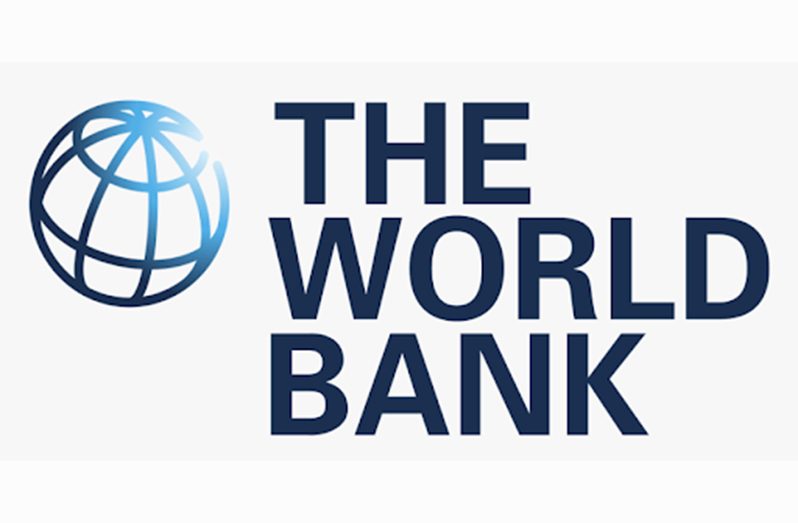— World Bank projects in latest report
GUYANA’S fast-growing economy, which has been able to record positive growth in 2020, despite the devastating effects of the COVID-19 pandemic, is projected to grow by 7.8 per cent in 2021, according to the World Bank. In the January 2021 edition of the Global Economic Prospects, the World Bank stated that global economic output is expected to expand by four per cent this year, a downward revision of more than five per cent of the pre-pandemic projections. Further, giving a moderate projection for 2022, global growth is expected to be about 3.8 per cent then, owing to the pandemic’s lasting damage to potential growth.
The country data for Guyana, as stated by the World Bank, projects that the country will record a 7.8 per cent growth rate in Real Gross Domestic Product (GDP) for 2021; this is a 0.3 per cent reduction in the previous 2021 projection made by the bank in June 2020. The bank also projects a 3.6 per cent growth rate in 2022 for Guyana. The Real GDP is an inflation-adjusted measure that reflects the value of all goods and services produced by an economy (in this case, Guyana’s economy) in a given year. In simpler terms, the real GDP measures a country’s total economic output, adjusted for price changes. The World Bank said that Guyana’s Real GDP grew by 23.2 per cent in 2020. Last year, prior to the pandemic, Guyana was expected to grow by 86 per cent in 2020.
In April, one month after the first case of COVID-19 was recorded in Guyana, that growth rate was revised to 52.8 per cent. Then, in October, due to the enduring effects of the pandemic, the International Monetary Fund (IMF) projected that the country’s GDP would grow by 26.2 per cent- a lower figure, but still the only positive growth rate in the Latin America and the Caribbean region. In October 2020, also, according to the NASDAQ Stock Market, Guyana’s growth was projected to be 12 per cent in 2021, 49 per cent in 2022 and 28 per cent in 2023. The country’s GDP of about $6.8 billion is expected to more than double by 2025, reaching over $14 billion. These projections may be subjected to downward revisions when reports for this year are released, just as with the World Bank. Guyana is a middle-income developing country and its massive growth is largely attributed to its burgeoning oil and gas sector. The country is, however, resource-rich even without oil as it is covered by dense forests, and is home to fertile agricultural lands and abundant natural resources. Gold, bauxite, sugar, rice, timber, and shrimp are among its leading exports.
ECONOMIC PROSPECTS BRIGHTER
“Our economic prospects have never been brighter. Our collective feet are firmly placed on the first rungs of a ladder to prosperity that is clearly within our sight,” President, Dr Irfaan Ali said during his message to the nation on January 1, 2021. Guyana received a payment of US$49.3 million for its fourth oil lift, and ended the year on a high note with approximately US$200 million being generated so far from the country’s oil and gas sector. Considering the country’s oil revenue and other lucrative sources of income, the President believes that the standard of living and the quality of life must be lifted for all. Work will be rewarded; hard work will be rewarded even more, he said.
Vice-President Bharrat Jagdeo told this newspaper last year that he is cautious about linking GDP growth to the well-being of the population, because a massive growth in GDP does not necessarily correspond to a major positive increase in revenues or employment. Greater well-being for Guyanese, he explained, includes increasing employment, ensuring that individuals have greater disposable income, and that there are direct interventions, such as the government’s COVID-19 cash grant geared at providing relief. The global recovery, which has been dampened in the near term by a resurgence of COVID-19 cases, is expected to strengthen over the forecast horizon, according to the World Bank. This would be a result of increasing improvements in confidence, consumption, and trade, supported by ongoing vaccination.
‘FOCUS ON PRIORITY AREAS’
Even so, looking ahead, the World Bank cautioned world leaders to be wary of the enduring impact the COVID-19 pandemic may have on investment and human capital. “Limiting the spread of the virus, providing relief for vulnerable populations, and overcoming vaccine-related challenges are key immediate policy priorities,” the World Bank said, adding, “As the crisis abates, policymakers need to balance the risks from large and growing debt loads with those from slowing the economy through premature fiscal tightening.” The World Bank also advocated for countries to safeguard health and education, prioritising investments in digital investments and green infrastructure, improving governance and enhancing debt transparency.
A key mechanism of addressing all of these challenges will be global cooperation, the bank further noted. “The recovery expected in the baseline forecast could be derailed by the materialisation of a number of risks. The spread of the virus could accelerate if pandemic-control measures fail or if there are delays in the deployment of vaccines,” the bank said. If that occurs, the already slow global recovery would be interrupted and existing strains would be exacerbated. With governments unable to continue providing support and, in some circumstances, temporary bouts of unemployment and business shutdowns could all become realities.




.png)









